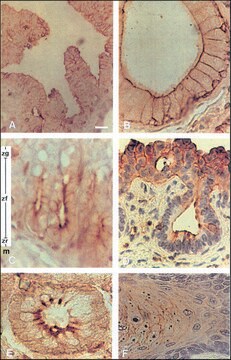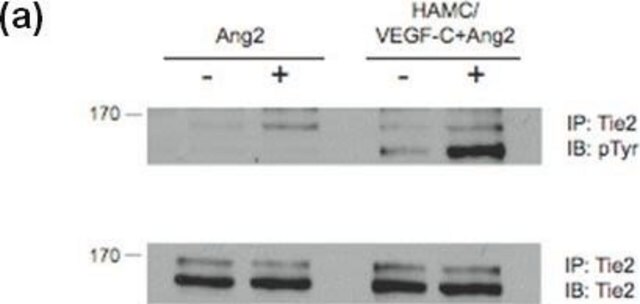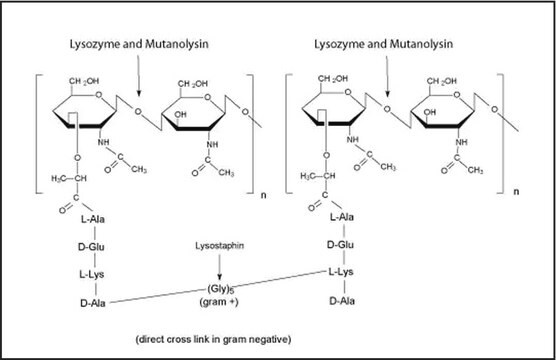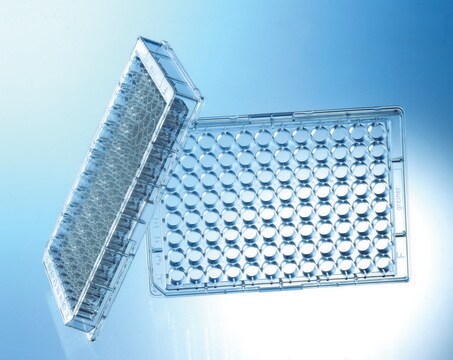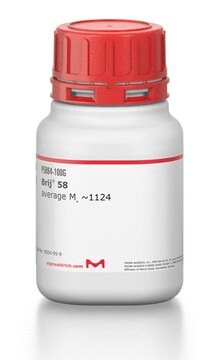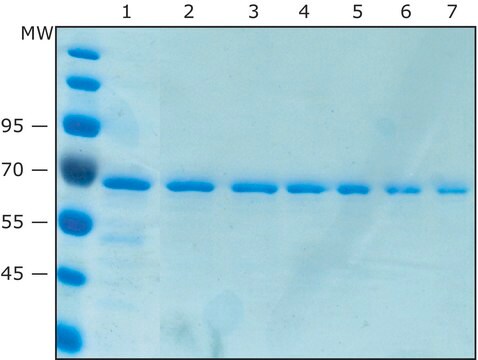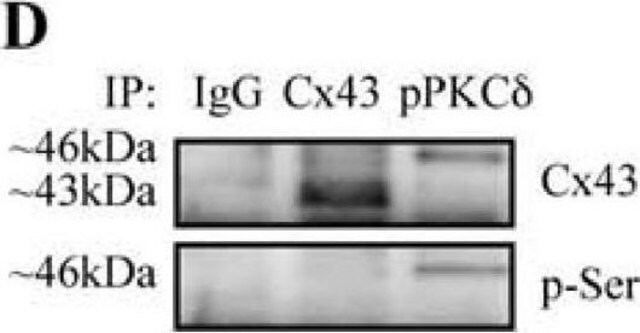Wichtige Dokumente
A1806
Monoclonal Anti-Phosphotyrosine aus mouse
clone PT-66, purified immunoglobulin, PBS solution
Synonym(e):
Monoclonal Anti-Phosphotyrosine, Phospho-Tyr, Phospho-tyrosine, p-Tyr
About This Item
Empfohlene Produkte
Biologische Quelle
mouse
Qualitätsniveau
Rekombinant
expressed in mouse cell line
Konjugat
agarose conjugate
Antikörperform
purified immunoglobulin
Antikörper-Produkttyp
primary antibodies
Klon
PT-66, monoclonal
Form
PBS solution
Methode(n)
immunoprecipitation (IP): suitable
Isotyp
IgG1
Kapazität
1 mg/mL binding capacity
Versandbedingung
wet ice
Lagertemp.
2-8°C
Posttranslationale Modifikation Target
phosphorylation (pTyr)
Suchen Sie nach ähnlichen Produkten? Aufrufen Leitfaden zum Produktvergleich
Verwandte Kategorien
Allgemeine Beschreibung
Immunogen
Anwendung
- immunoprecipitation experiments for affinity-purification of phosphotyrosine proteins
- phosphotyrosine pulldown assays
- PI3-kinase assay
Biochem./physiol. Wirkung
Physikalische Form
Haftungsausschluss
Sie haben nicht das passende Produkt gefunden?
Probieren Sie unser Produkt-Auswahlhilfe. aus.
Lagerklassenschlüssel
10 - Combustible liquids
WGK
WGK 3
Flammpunkt (°F)
Not applicable
Flammpunkt (°C)
Not applicable
Hier finden Sie alle aktuellen Versionen:
Besitzen Sie dieses Produkt bereits?
In der Dokumentenbibliothek finden Sie die Dokumentation zu den Produkten, die Sie kürzlich erworben haben.
Unser Team von Wissenschaftlern verfügt über Erfahrung in allen Forschungsbereichen einschließlich Life Science, Materialwissenschaften, chemischer Synthese, Chromatographie, Analytik und vielen mehr..
Setzen Sie sich mit dem technischen Dienst in Verbindung.